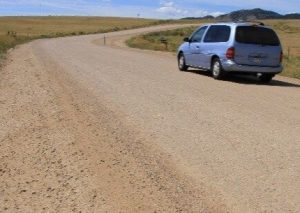 1Flatworld, Flickr, CC BY-NC-ND 4.0
1Flatworld, Flickr, CC BY-NC-ND 4.0 This article is partially derived and excerpted from NCHRP Research Report 1113: New Mobility Options in Travel Demand Forecasting and Modeling: A Guide and NCHRP Web-Only Document 399: Developing a Guide for New Mobility Options in Travel Demand Forecasting and Modeling.
The objective of NCHRP Project 20-102(29), “Incorporating New Mobility Options into Travel Demand Forecasting and Modeling,” was to develop a practitioners’ guide for implementation of best practices for state departments of transportations (DOTs) and metropolitan planning organizations looking to incorporate new mobility options (NMOs)—such as ridesharing, transportation networking companies, and connected and autonomous vehicles—into travel demand forecasting and modeling (TDFM) frameworks. The research team developed the guide—National Cooperative Highway Research Program (NCHRP) Research Report 1113: New Mobility Options in Travel Demand Forecasting and Modeling: A Guide—for a select set of NMOs, building on the different project tasks, which include the following:
- Review of current state of research and practice,
- Stakeholder feedback on NMO inclusion in TDFM, and
- Data-supported approaches for examining TDFM inclusion decisions and approaches for incorporating TDFM changes.
Based on the literature relevant to NMOs and potential opportunity to prepare data-driven guidance, the research team identified three NMOs as appropriate for the guidance document: shared micromobility, transportation networking companies, and connected and autonomous vehicles. The team designed and disseminated an online survey to elicit responses from transportation professionals across the United States. Stakeholders’ experience offered insights about the challenges of incorporating NMOs into TDFMs. Survey responses also indicated that stakeholders felt there was a need for guidance in conducting TDFM updates.
The project guide is designed to assist practitioners—at state DOTs and metropolitan planning organizations—with examining the impact of NMOs in their jurisdictions. The document is intended to provide stakeholders with a resource along two directions: First, it offers guidance on how to assess the impact of NMOs in the jurisdiction by developing data-driven travel demand metrics. And second, it gives step-by-step instructions on how the TDFM components can be updated.
The analysis is also organized by type of TDFM categorized as trip-based model or tour- or activity-based model. For trip- and activity-based models, the research team provided metrics relevant for components that include the following:
- Sociodemographic and socioeconomic variables,
- Trip generation,
- Trip distribution,
- Tour- and trip-level mode choice,
- Trip assignment,
- Activity generation and scheduling, and
- Destination choice.
The NMO-related TDFM update implementation is still in its infancy. Hence, there is a lack of jurisdiction-level data to provide Use Case guidance for NMOs. To address this challenge, the research team employed real-world datasets currently used for base-model development and adapted them to reflect potential NMO-related scenarios. To reflect the model heterogeneity and complexity of the TDFM update process, the research team selected three Use Case examples, including household vehicle ownership, household trip rates, and trip-/tour-level mode choice. For each of the three, the research team documented the model update procedures and provided the data and scripts generated for ease of application. The Use Case examples cover a subset of modules in the TDFM model component universe. Therefore, transportation professionals are encouraged to consider the data-driven procedures provided—along with their jurisdictional experience—to finalize decisions on the TDFM update process.





